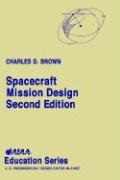Read more
"Spacecraft Mission Design, Second Edition, " takes the shortest route to practical understanding of mission design. It focuses on the most general and most practical tools needed for the early spacecraft design studies, including the principles of two-body motion, definition of orbits, orbital maneuvers, and central body observation. The use of elementary mathematics makes this concise book ideal for upper class college students, graduates, and practicing engineers or managers. There are enough worked examples that one can be self-taught.
List of contents
Part 1 Introduction: Arrangement of the Book; ORBWIN - AIAA Mission Design Software; Study of Two-Body Motion. Part 2 Two-Body Motion: Circular Orbits; General Solution; Elliptical Orbits; Parabolic Orbits; Hyperbolic Orbits; Time Systems: Coordinate Systems; Classical Orbital Elements; Problems. Part 3 Orbital Manoeuvres: In-Plane Orbit Changes; Hohmann Transfer; Bielliptical Transfer; Plane Changes; Combined Manoeuvres; Propulsion for Manoeuvres; Problems. Part 4 Observing the Central Body: Effect of the Launch Site; Orbit Perturbations; Ground Track; Spacecraft Horizon; Constellations; Problems. Part 5 Special Earth Orbits: Geosynchronous Orbit; Sun-Synchronous Orbit; Molniya Orbit; Low Earth Orbit; Problems. Part 6 Interplanetary Missions: Patched Conic Approximation; Highly Simplified Example; Patched Conic Procedure; Locating the Planets; Design of the Transfer Ellipse; Design of the Departure Trajectory; Design of the Arrival Trajectory; Gravity-Assist Manoeuvre; Cycler Orbits; Establishing a Planetary Orbit. Part 7 Lunar Trajectories; Motion of the Earth-Moon System; Time of Flight and Injection Velocity; Sphere of Influence; Lunar Patched Conic; Problems; Appendix A - ORBWIN - AIAA Mission Design Software for Windows; Appendix B - Mission Design Glossary; Appendix C - Mission Design Data.

